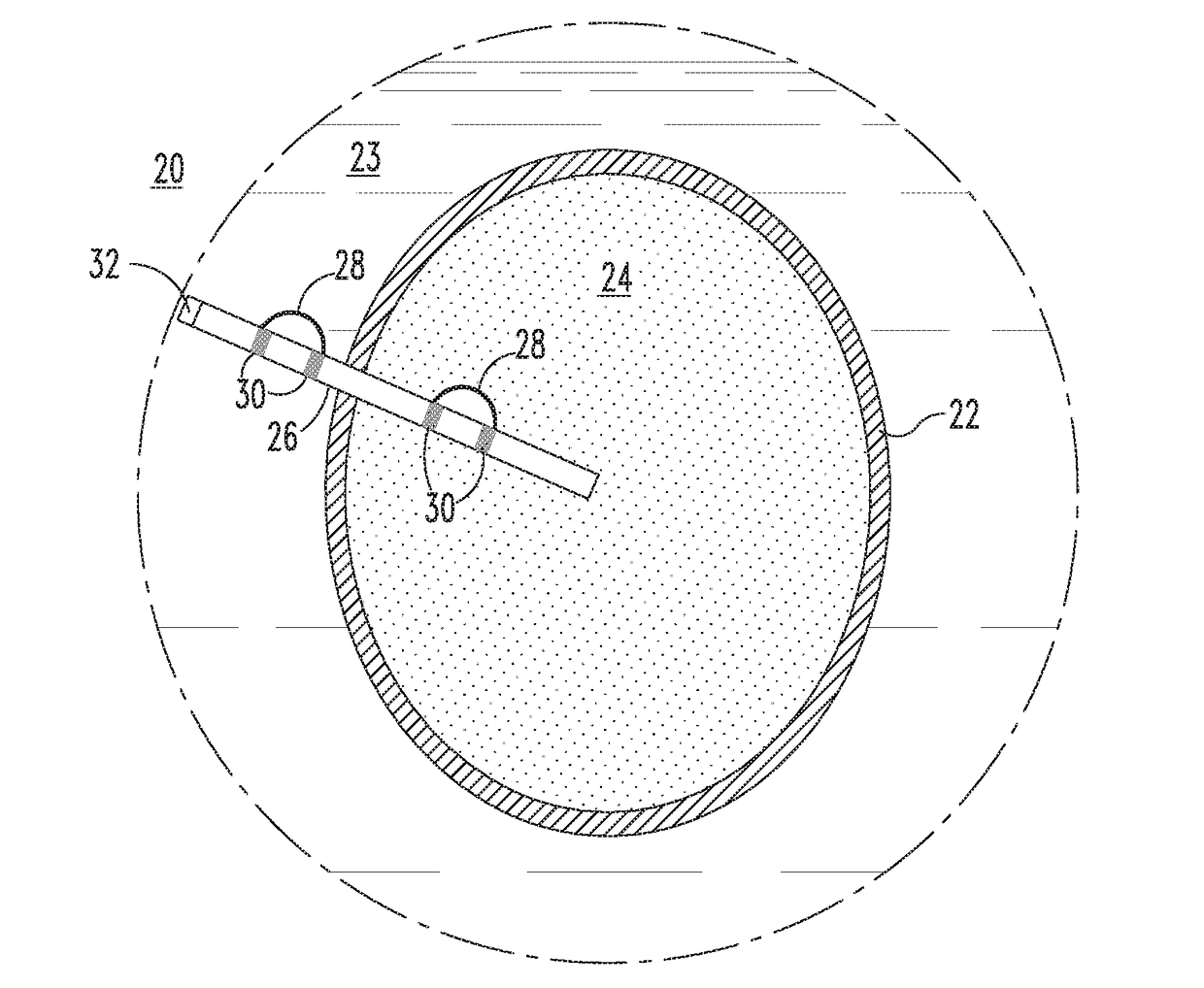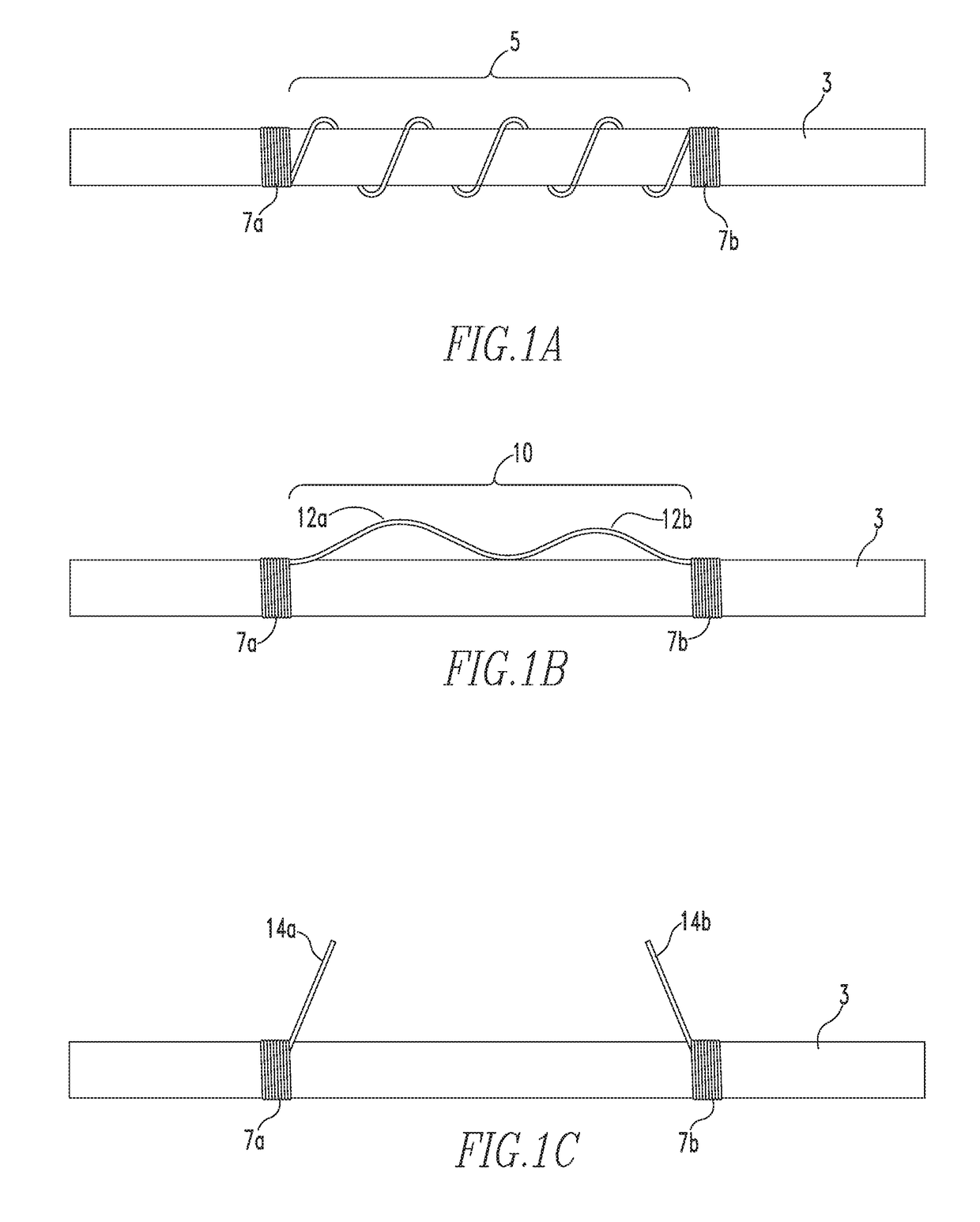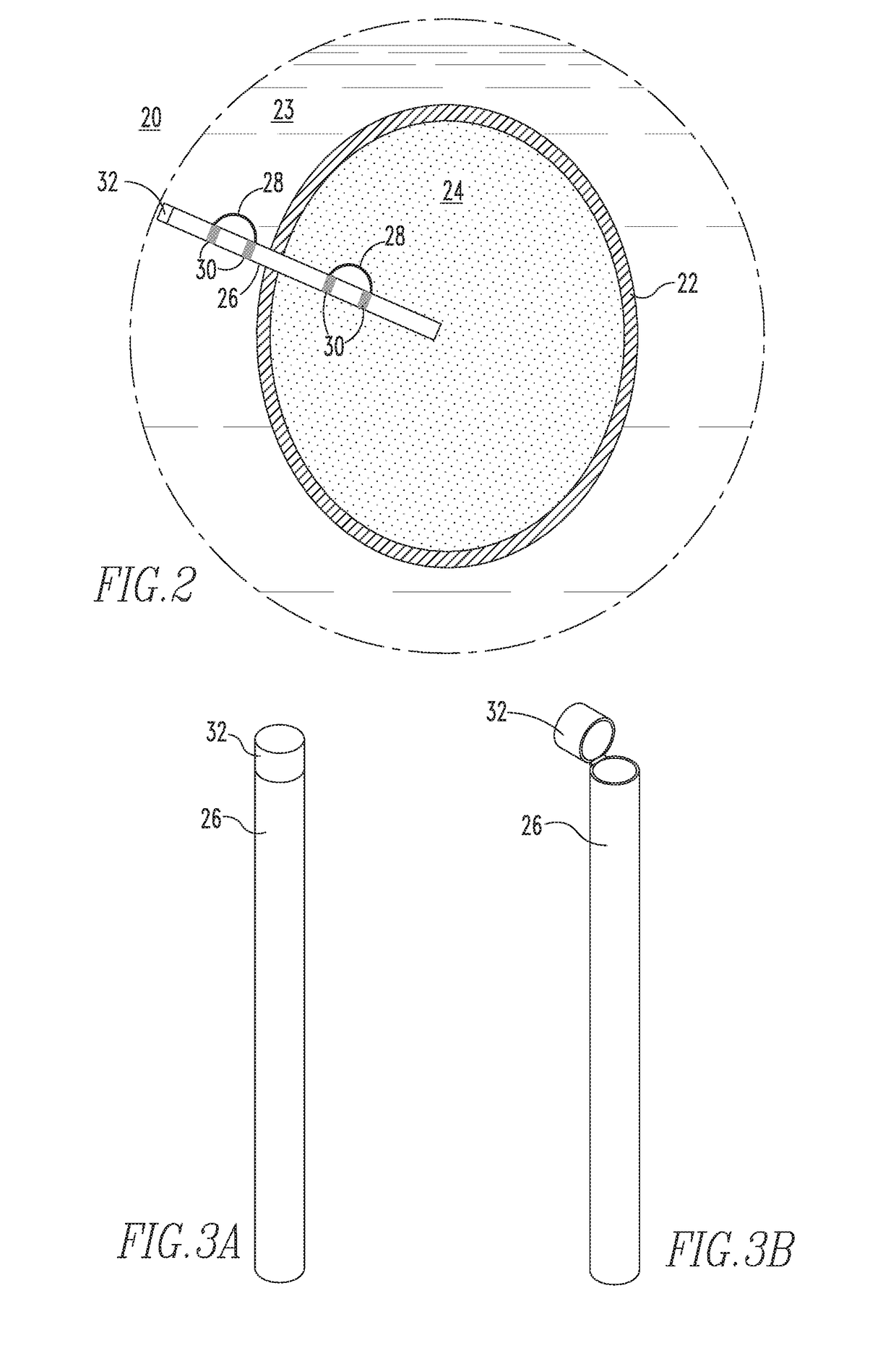A novel low-profile ventriculoamniotic shunt for fetal aqueductal stenosis
a fetal aqueductal stenosis, low-profile technology, applied in the direction of intracranial pressure measurement, medical science, surgery, etc., can solve the problems of clogging, affecting the shunting device, and affecting the shunting effect, so as to prevent the shunting device from clogging
- Summary
- Abstract
- Description
- Claims
- Application Information
AI Technical Summary
Benefits of technology
Problems solved by technology
Method used
Image
Examples
examples
[0048]PEUU was prepared by a two-step polymerization process whereby polycaprolactone diol, 1,4-diisocyanatobutane, and 1,4-diaminobutane were combined in a 1:2:1 molar ratio. In the first step, a pre-polymer was formed by reacting polycaprolactone diol with 1,4-diisocyanatobutane. In the second step, the pre-polymer was reacted with 1,4-diaminobutane to extend the chain and to form the final polymer.
[0049]A PEUU coating and a PEUU valve were fabricated by electrospinning. The PEUU was dissolved in 1,1,1,3,3,3-hexafluoroisopropanol (HFIP) at a concentration of 12% (w / v), and electrospun directly onto the superelastic nitinol mesh anchor to achieve a thin layer of coating, and onto a rotating and translating stainless steel mandrel to yield a PEUU membrane. The feeding rate of the PEUU solution through a charged capillary was kept at about 1.5 ml / h, the collecting target (nitinol anchor or rotating mandrel) was located about 10 cm from the tip of the capillary, and the voltage betwee...
PUM
 Login to View More
Login to View More Abstract
Description
Claims
Application Information
 Login to View More
Login to View More - R&D Engineer
- R&D Manager
- IP Professional
- Industry Leading Data Capabilities
- Powerful AI technology
- Patent DNA Extraction
Browse by: Latest US Patents, China's latest patents, Technical Efficacy Thesaurus, Application Domain, Technology Topic, Popular Technical Reports.
© 2024 PatSnap. All rights reserved.Legal|Privacy policy|Modern Slavery Act Transparency Statement|Sitemap|About US| Contact US: help@patsnap.com










